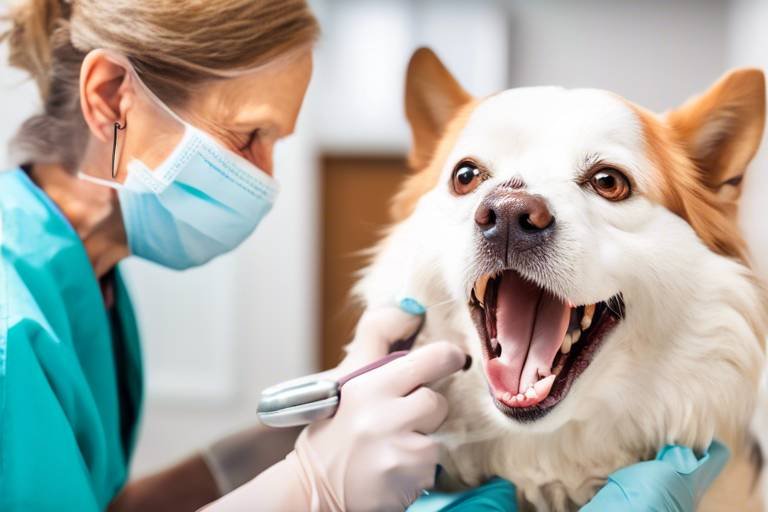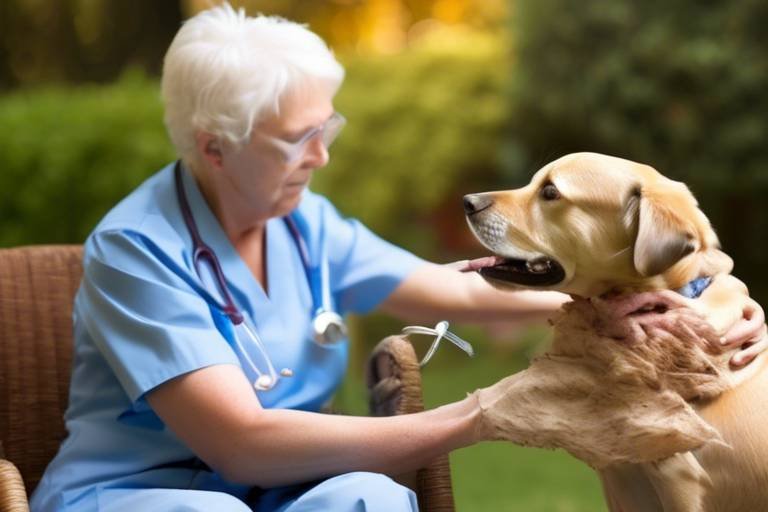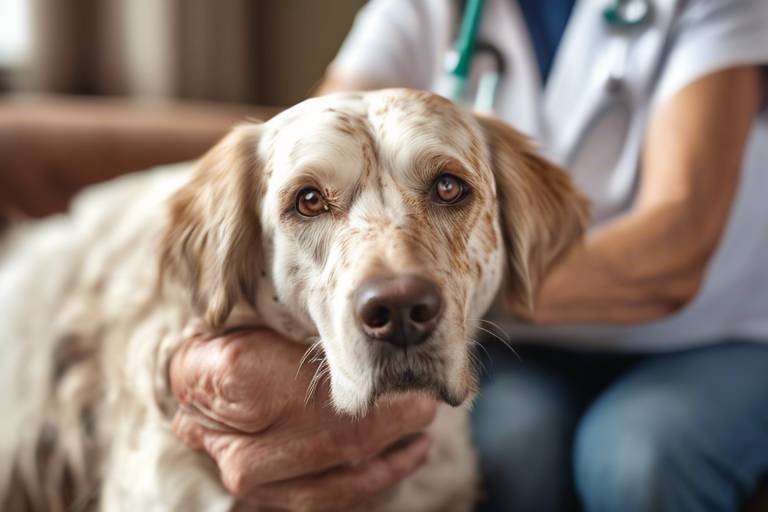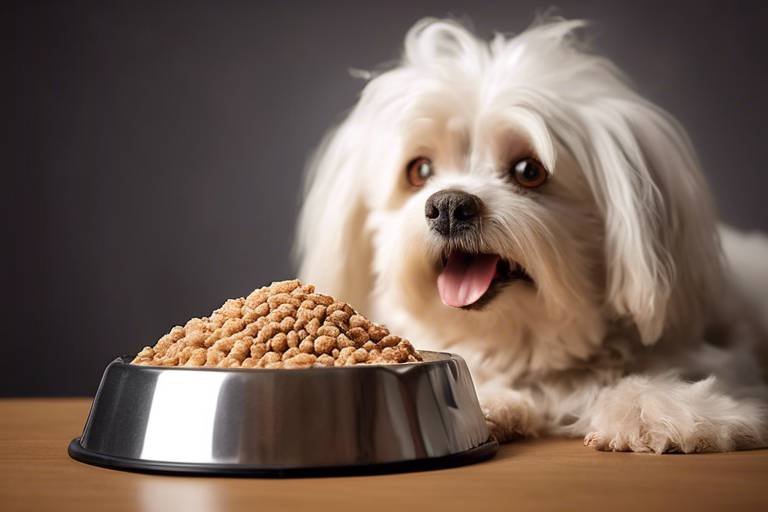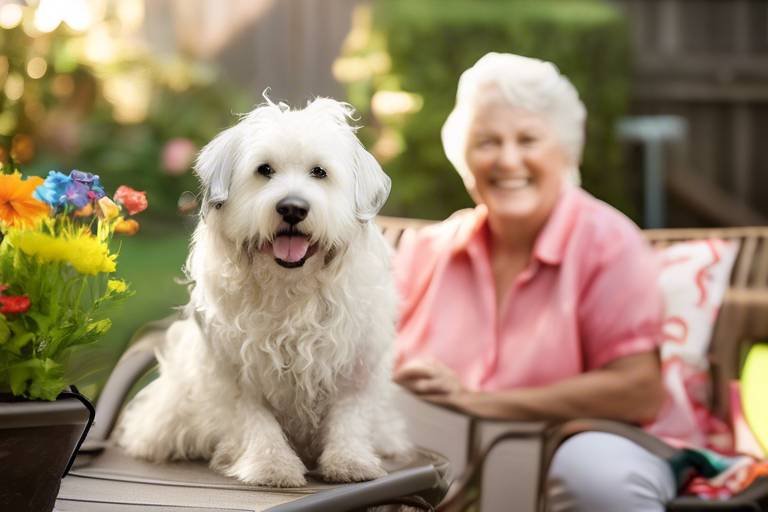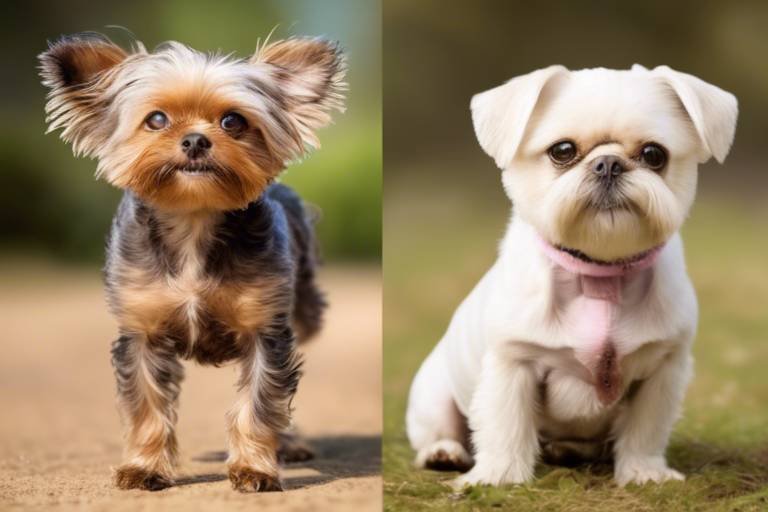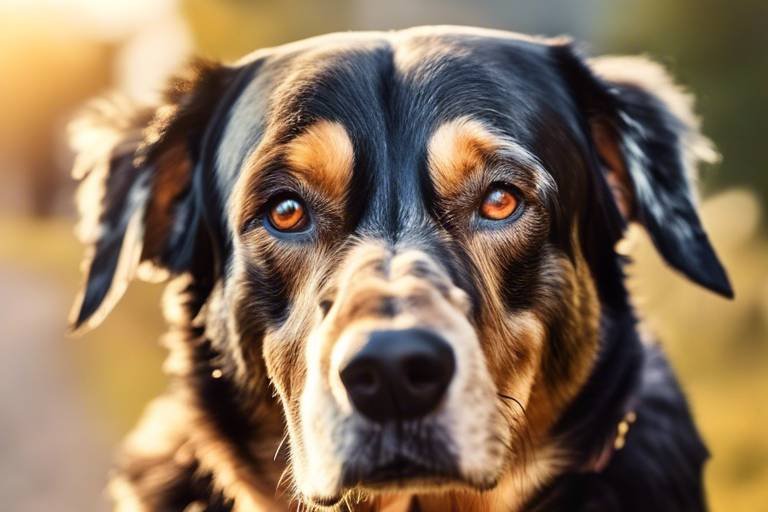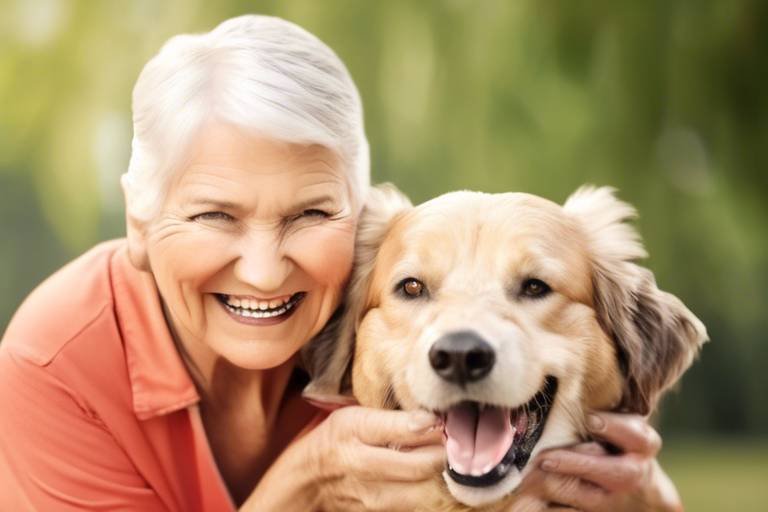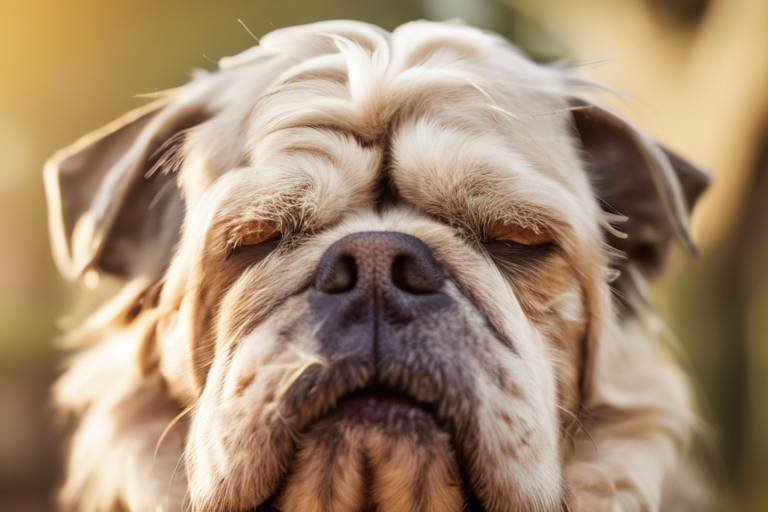How to Encourage Hydration in Senior Pets
As our furry companions age, their hydration needs change significantly. Keeping senior pets hydrated is not just a matter of providing water; it’s a vital aspect of their health and well-being. Many pet owners may underestimate the importance of hydration, leading to potential health issues that can be easily avoided. Just like humans, our pets rely on water to maintain their bodily functions, and as they grow older, their ability to sense thirst may diminish. This article will explore effective strategies to ensure that your senior pets stay hydrated and healthy.
Understanding why hydration is crucial for older pets can help owners prioritize their fluid intake. As pets age, they may experience a decline in kidney function, making it essential to maintain adequate hydration to prevent issues like kidney disease and urinary tract infections. Water plays a crucial role in digestion, nutrient absorption, and temperature regulation. A well-hydrated pet is less likely to suffer from constipation and other digestive problems. Furthermore, hydration supports joint health, which is particularly important for senior pets who may suffer from arthritis or other mobility issues.
Recognizing the signs of dehydration is essential for timely intervention. Common symptoms include:
- Dry gums: If your pet's gums feel dry or sticky to the touch, it's a sign they may need more fluids.
- Lethargy: A noticeable decrease in energy levels can indicate dehydration.
- Decreased skin elasticity: Gently pinch your pet's skin; if it doesn't quickly return to its original position, they may be dehydrated.
Other signs can include a lack of appetite and dark-colored urine. If you notice any of these symptoms, it’s important to take action quickly.
Many misconceptions surround pet hydration. For instance, some owners believe that pets only need water when they are thirsty. However, older pets may not feel thirsty as often, making it crucial to encourage regular drinking. Another myth is that pets can get enough hydration from their food alone. While wet food can contribute to their daily water intake, it often isn't enough to meet their overall hydration needs. Understanding these myths can help pet owners make informed decisions about their senior pets' hydration practices.
Understanding the differences between providing water and wet food can help owners tailor their senior pets' diets. While wet food does provide moisture, it often lacks the necessary fluid intake that pure water offers. It's essential to strike a balance between the two to ensure that your pet remains hydrated without compromising their nutritional needs.
Certain health conditions can affect a senior pet's hydration needs. For example, pets with diabetes or kidney disease may require more fluids than healthy pets. It's crucial to consult with your veterinarian to understand how these conditions influence your pet's hydration and what adjustments may be necessary in their diet and water intake.
Exploring modern solutions like pet water fountains and flavored water can make hydration more appealing to senior pets. Fountains provide a continuous flow of fresh water, which can entice pets to drink more. Additionally, adding a splash of low-sodium broth to their water can make it more enticing, encouraging them to hydrate regularly.
Implementing creative strategies can significantly increase your senior pet's water intake. Here are some ideas to consider:
- Ice cubes: Freeze low-sodium broth or pet-safe fruits into ice cubes for a tasty treat that also hydrates.
- Add water to kibble: Soaking dry food in water can make it more appealing and increase their fluid intake.
- Frequent water changes: Regularly refreshing their water bowl can encourage them to drink more.
By making drinking an enjoyable experience, you can help ensure your senior pet stays hydrated throughout the day.
Creating a consistent hydration routine can help senior pets develop a habit of drinking regularly. Designate specific times for water breaks, especially after meals or playtime. You might even consider using a pet water bottle during walks to ensure they have access to water when they need it.
Regularly monitoring your senior pet's water intake and behavior can help identify potential hydration issues early. Keep track of how much water they drink daily, and note any changes in their drinking habits. If you notice a significant decrease in their water intake or any signs of dehydration, consult your veterinarian immediately.
Q: How much water should my senior pet drink daily?
A: The general guideline is about 1 ounce of water per pound of body weight, but this can vary based on diet, activity level, and health conditions.
Q: Can I give my pet flavored water?
A: Yes, as long as it’s low in sodium and free from harmful ingredients. Always check with your vet if you’re unsure.
Q: What are the best ways to entice a senior pet to drink?
A: Try adding ice cubes, offering wet food, or using a pet water fountain to make drinking more appealing.
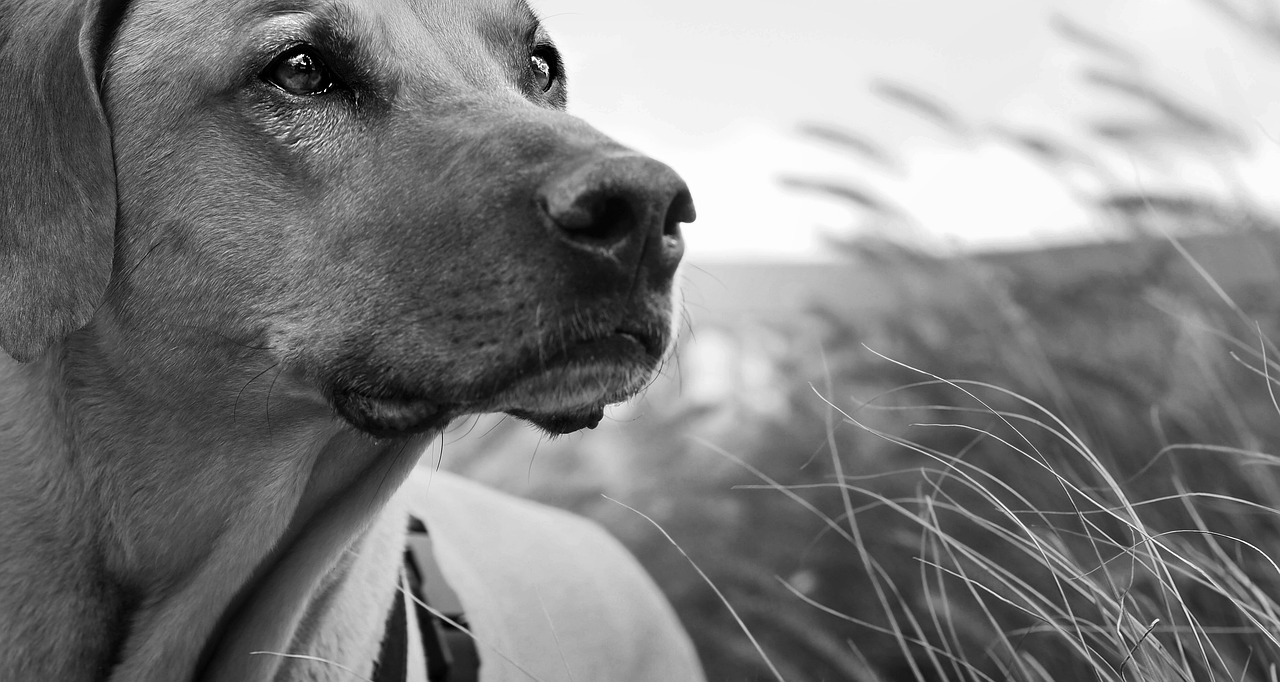
The Importance of Hydration for Senior Pets
As our furry companions age, their bodies undergo various changes that can significantly impact their health and well-being. One of the most critical aspects of caring for senior pets is ensuring they stay properly hydrated. Hydration plays a vital role in maintaining essential bodily functions, including digestion, circulation, and temperature regulation. For older pets, the stakes are even higher, as they are more prone to health issues such as kidney disease and urinary tract infections, which can be exacerbated by insufficient water intake.
Did you know that a dehydrated pet can experience a range of health problems? When pets don’t drink enough water, they can become lethargic, lose their appetite, and even experience confusion. This is particularly concerning for senior pets, who may already be dealing with age-related ailments. To put it simply, hydration is not just about quenching thirst; it's about ensuring a healthy, vibrant life for your beloved pet.
Moreover, the aging process can affect a pet's thirst mechanism. Many senior pets may not feel thirsty even when their bodies need water. This is where pet owners need to step in—by being proactive in monitoring their hydration levels. Regularly providing fresh water and encouraging drinking habits can make a world of difference.
To illustrate the importance of hydration, consider the following table that outlines the potential health issues associated with dehydration in senior pets:
| Health Issue | Description |
|---|---|
| Kidney Disease | Dehydration can lead to kidney dysfunction, making it harder for the body to filter waste. |
| Urinary Tract Infections | Insufficient water intake can concentrate urine, increasing the risk of infections. |
| Constipation | A lack of hydration can lead to dry stools and difficulty in bowel movements. |
| Heat Stroke | Older pets are more susceptible to overheating, and dehydration can exacerbate this risk. |
In conclusion, keeping your senior pet hydrated is not just about filling their water bowl. It’s about being attentive to their needs and understanding the significant role hydration plays in their overall health. By prioritizing hydration, you can help your furry friend live a longer, healthier, and happier life. So, the next time you refill their water bowl, remember that you’re not just providing a drink—you’re investing in their well-being.
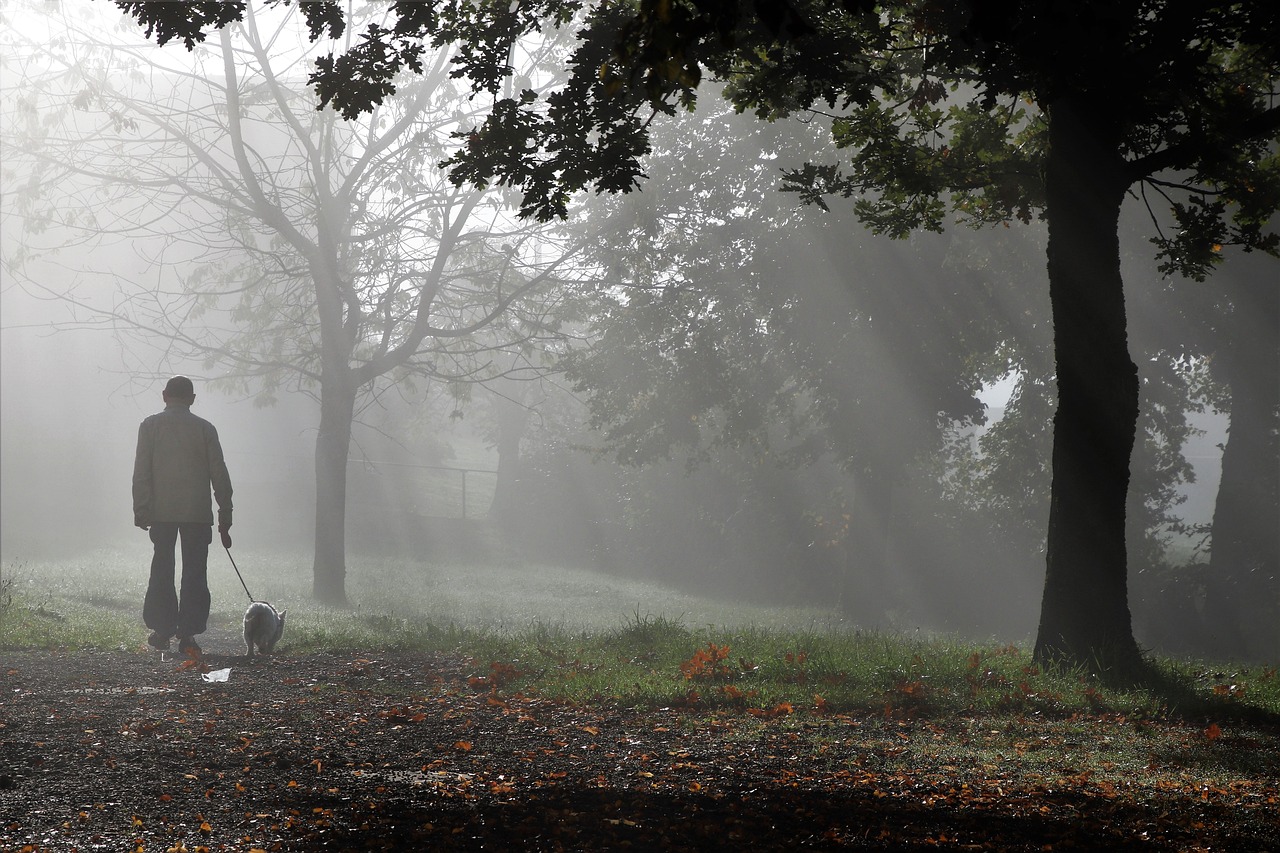
Signs of Dehydration in Senior Pets
As a devoted pet owner, it's crucial to keep a close eye on your furry friend's hydration levels, especially as they age. Senior pets often face unique challenges that can make them more susceptible to dehydration. But how can you tell if your beloved companion is not getting enough water? Recognizing the signs of dehydration is vital for timely intervention, which can save your pet from serious health issues. One of the first indicators to watch for is dry gums. When you gently lift your pet's lip, you should see moist, pink gums. If they appear dry or sticky, it's a sign that your pet may be dehydrated. Another common symptom is lethargy. If your once playful pup or curious cat seems unusually tired or less active, it could be a signal that they need more fluids.
Additionally, decreased skin elasticity can be a telltale sign of dehydration. To check this, gently pinch the skin on the back of your pet's neck and release it. If the skin doesn't snap back into place quickly, it may indicate that your pet is dehydrated. Other signs to look out for include a reduced appetite and changes in urination patterns, such as less frequent trips outside or smaller amounts of urine. It's essential to monitor these changes, as they can be indicative of underlying health problems.
Moreover, senior pets may also show signs of increased panting or a dry nose, which can further indicate dehydration. If you notice any combination of these symptoms, it's crucial to act swiftly. A quick visit to your veterinarian can help determine the severity of the situation and provide appropriate treatment options. Remember, maintaining proper hydration is not just about preventing dehydration; it’s about ensuring your senior pet enjoys a healthy and vibrant life.
To summarize, here are some key signs of dehydration in senior pets:
- Dry gums
- Lethargy
- Decreased skin elasticity
- Reduced appetite
- Changes in urination patterns
- Increased panting
- Dry nose
Being proactive about your pet's hydration can make all the difference. By understanding these signs, you can help ensure that your senior pet stays healthy and happy for years to come.
Common Myths About Pet Hydration
When it comes to keeping our beloved senior pets hydrated, there are several myths that can cloud our judgment and lead to poor hydration practices. One common misconception is that pets get enough water from their food alone. While it's true that wet food contains moisture, many pets still require additional water intake to stay adequately hydrated. Think of it like eating a salad; while it's healthy, you still need to drink water to quench your thirst!
Another prevalent myth is that pets will drink when they are thirsty. This is especially misleading for senior pets, who may not have the same thirst response as younger animals. Just like some older humans may forget to drink water throughout the day, senior pets can also overlook their hydration needs. It's crucial for pet owners to actively encourage drinking rather than relying solely on their pets' instincts.
Some owners believe that all pets dislike drinking water, but this isn't the case! Many pets simply prefer flavored or fresh water over stagnant water in a bowl. This is where innovation comes into play—consider investing in a pet water fountain or adding a splash of low-sodium broth to their water to make it more enticing. The right approach can transform hydration from a chore into a delightful experience for your furry friend.
Additionally, there's a myth that dehydration is only a concern in hot weather. In reality, senior pets can become dehydrated at any time of the year, regardless of the temperature. Factors such as medications, health conditions, and even the type of food they eat can all influence their hydration levels. It's essential for pet owners to remain vigilant and proactive about hydration year-round.
So, how do we combat these myths? By educating ourselves and staying informed about our pets' hydration needs. Understanding the truth behind these misconceptions can empower pet owners to take better care of their senior companions. Remember, hydration is not just about quenching thirst; it’s about promoting overall health and well-being!
- How much water should my senior pet drink daily? The general guideline is that pets should consume about 1 ounce of water per pound of body weight each day, but individual needs can vary.
- What are the signs that my pet is dehydrated? Look for dry gums, lethargy, sunken eyes, and decreased skin elasticity.
- Can I give my pet flavored water? Yes, adding a little low-sodium broth can encourage them to drink more!
- Is wet food enough for hydration? While wet food does provide moisture, it's often not sufficient on its own, especially for senior pets.
Water vs. Wet Food
When it comes to keeping our senior pets hydrated, the debate between providing water and wet food is more significant than many pet owners realize. Both options play a crucial role in ensuring that our furry friends receive adequate moisture, but they serve different purposes and can complement each other effectively. Let's dive into this topic and explore how to balance these two hydration sources.
First, let's talk about water. It's the most straightforward and essential source of hydration for pets. Fresh water should always be available, as it allows pets to drink as needed throughout the day. However, some senior pets may not drink as much water as they should, which can lead to dehydration and other health issues. This is where wet food comes into play. Wet food typically contains a higher moisture content—often around 70-80%—which can significantly contribute to a pet's overall fluid intake.
So, what are the key differences between water and wet food in terms of hydration? Here’s a quick comparison:
| Aspect | Water | Wet Food |
|---|---|---|
| Moisture Content | 100% | 70-80% |
| Convenience | Easy to provide and refill | Requires feeding time and preparation |
| Palatability | Neutral taste | Often more appealing to pets due to flavors |
| Health Benefits | Essential for all bodily functions | Can provide nutrients and additional hydration |
As you can see, both water and wet food have their unique benefits. While water is crucial for all pets, wet food can be an excellent way to ensure that senior pets, who may have reduced thirst drive, still receive adequate hydration. It's important to observe your pet's preferences. Some pets may prefer drinking water, while others may be more inclined to eat wet food. A combination of both can be a winning strategy!
Additionally, if your senior pet is dealing with specific health issues, such as kidney disease or dental problems, their hydration needs may vary. In such cases, consulting with your veterinarian is essential to determine the best approach for your pet's hydration. Remember, the goal is to keep them healthy and happy, and understanding the balance between water and wet food is a step in the right direction.
Hydration and Health Conditions
When it comes to our beloved senior pets, understanding how various health conditions can impact their hydration needs is crucial. Just like humans, pets experience changes in their bodies as they age, and certain medical issues can exacerbate their need for fluids. For instance, pets suffering from kidney disease often have a compromised ability to concentrate urine, which can lead to increased fluid loss. This means that these pets may require more water to stay hydrated, and as a pet owner, it’s essential to be proactive in monitoring their intake.
Another common condition that affects hydration is diabetes. Diabetic pets often experience increased urination, which can lead to dehydration if not adequately addressed. They may need a tailored hydration plan to ensure they are getting enough fluids throughout the day. Additionally, conditions like cushing's disease can also lead to increased thirst and urination, making it vital to keep an eye on their water bowl.
Moreover, pets with heart disease may have restrictions on their fluid intake due to the risk of fluid retention. In such cases, it’s essential to consult with your veterinarian to determine the right balance. Understanding these conditions can help you tailor your pet’s hydration strategy effectively. Here’s a quick overview of how various health conditions can affect hydration:
| Health Condition | Impact on Hydration | Recommended Action |
|---|---|---|
| Kidney Disease | Increased fluid loss | Provide more water; consider wet food |
| Diabetes | Increased thirst and urination | Monitor water intake closely |
| Cushing's Disease | Increased thirst and urination | Ensure constant access to fresh water |
| Heart Disease | Possible fluid restrictions | Consult with a vet for a tailored plan |
Incorporating these considerations into your pet care routine can make a significant difference in their quality of life. Always consult with your veterinarian if you notice any changes in your pet’s drinking habits, as they can provide guidance tailored to your pet’s specific health needs. Remember, staying ahead of hydration issues is not just about preventing dehydration; it's about enhancing your senior pet's overall health and well-being.
- How much water should my senior pet drink daily? The amount can vary based on size and health conditions, but a general rule is about 1 ounce of water per pound of body weight.
- Can I give my pet flavored water? Yes! Adding a little flavor can entice them to drink more, just ensure it's safe for pets.
- What are signs of dehydration in pets? Look for dry gums, lethargy, and decreased skin elasticity as key indicators.
- Is wet food enough for hydration? Wet food can help, but it's still important to provide fresh water daily.
Innovative Hydration Solutions
In today's world, keeping our senior pets hydrated can be a creative endeavor. Thankfully, there are that make drinking water more appealing and enjoyable for our furry friends. One of the most popular options is the use of pet water fountains. These fountains not only provide a continuous flow of fresh water but also create a gentle bubbling sound that many pets find intriguing. The movement of the water can entice even the most reluctant drinkers to take a sip. Plus, the filtration system helps keep the water clean and fresh, which is a significant bonus for both pets and their owners.
Another exciting solution is flavored water. Just like humans, pets can have their preferences when it comes to taste. Adding a splash of low-sodium chicken broth or beef broth to their water can make it much more enticing. Just be sure to choose broth that doesn't contain any harmful additives, like onions or excessive salt. This simple addition can turn a mundane bowl of water into a gourmet experience, encouraging your senior pet to drink more frequently.
For those who are a bit more adventurous, consider investing in hydration toys. These are toys designed to hold water or broth, allowing pets to enjoy a tasty treat while also getting the hydration they need. Some of these toys can even be frozen, providing a refreshing option on hot days. Imagine your pet happily gnawing on a frozen toy that slowly releases water or broth as they play—what a fun way to stay hydrated!
Furthermore, let's not overlook the power of ice cubes. Many pets love to chew on ice, and you can make this even more exciting by freezing small pieces of fruit or broth inside the cubes. This not only keeps them cool but also adds a burst of flavor, making hydration feel like a special treat rather than a chore. Just be cautious with the size of the cubes, especially for smaller pets, to avoid any choking hazards.
Lastly, it's essential to tailor the hydration solutions to your pet's specific needs. For instance, if your senior pet has mobility issues, placing multiple water stations around the house can encourage them to drink more often without too much effort. This way, they won’t have to travel far to quench their thirst, making hydration a seamless part of their daily routine.
In conclusion, keeping our senior pets hydrated doesn't have to be a struggle. By incorporating innovative solutions like pet water fountains, flavored water, hydration toys, and even ice cubes, we can ensure that our beloved companions stay hydrated and healthy. Remember, a well-hydrated pet is a happy pet!
- How much water should my senior pet drink daily? - It varies by size and activity level, but a general rule is about 1 ounce of water per pound of body weight.
- What are the signs of dehydration in pets? - Look for dry gums, lethargy, and decreased skin elasticity.
- Can I give my pet flavored water every day? - Yes, but ensure it’s low in sodium and free from harmful ingredients.
- Are pet water fountains worth it? - Absolutely! They encourage pets to drink more and keep the water fresh.
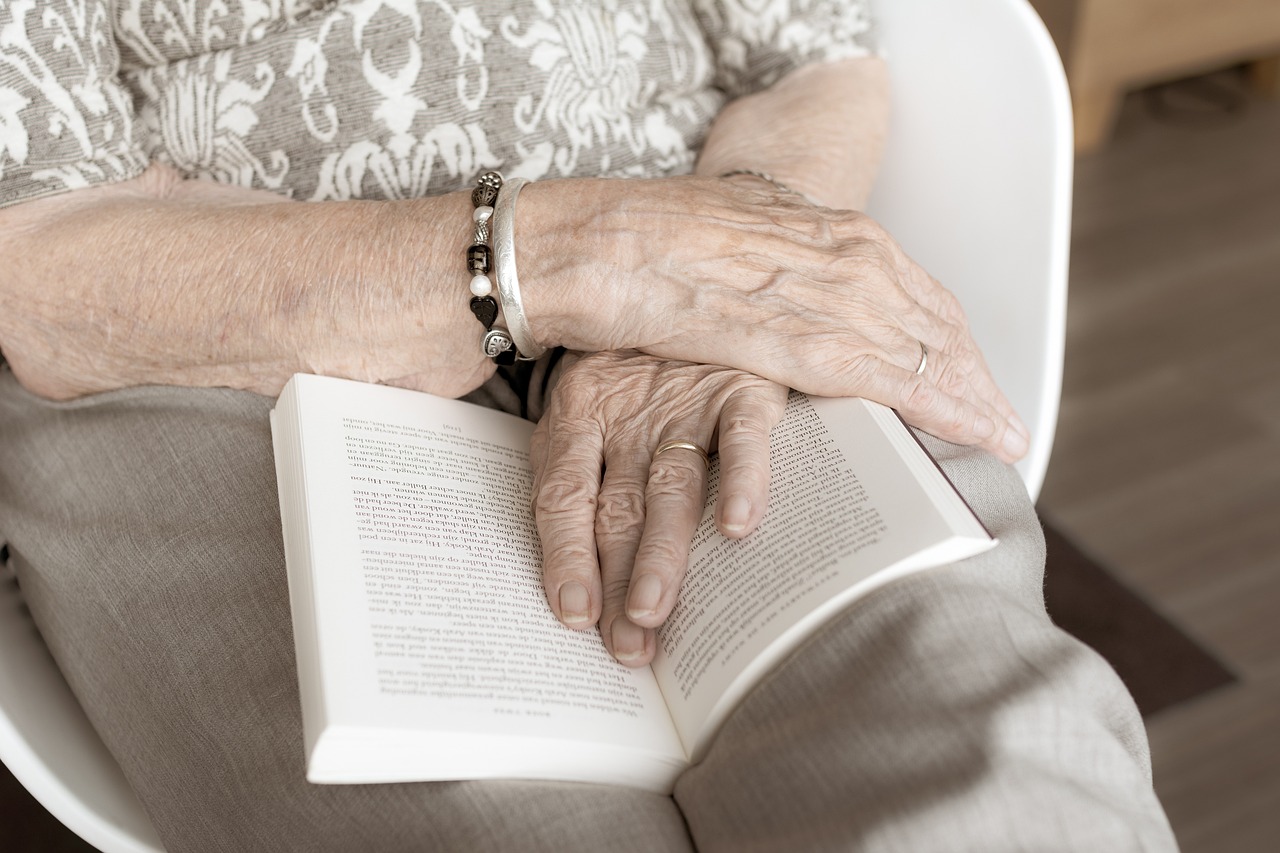
Creative Ways to Encourage Drinking
Keeping your senior pet hydrated doesn't have to be a chore. In fact, it can be a fun and engaging experience for both you and your furry friend! Think of hydration as a treasure hunt; the goal is to find exciting ways to make water more appealing. After all, just like humans, pets can be picky about their drinking habits. So, how do you turn that mundane bowl of water into something irresistible? Here are some creative strategies that can help.
One of the simplest yet most effective methods is to add a splash of flavor to their water. Just like you might enjoy a refreshing lemon-infused drink, your pet might be enticed by a little broth or low-sodium chicken stock mixed in their water bowl. This not only makes the water taste better but also adds some nutritional value. Just remember to keep the broth low in sodium to avoid any health issues.
Another fun idea is to freeze water into ice cubes and serve them as a treat! You can even go a step further and freeze small bits of their favorite fruits or even a little bit of broth inside the ice cube. When the weather is warm, these frozen treats can be a delightful way for your pet to hydrate while enjoying a tasty snack. Plus, watching them lick and chew on the ice can be quite the entertainment!
Have you ever considered adding water to their kibble? This is a fantastic way to sneak in some extra hydration without your pet even noticing. Simply pour a bit of water over their dry food and let it soak for a few minutes before serving. This not only enhances the flavor but also makes it easier for senior pets to chew and digest. It’s like giving them a gourmet meal with a hydration boost!
Also, think about the placement of their water bowls. Pets can be particular about where they drink. Make sure their water bowl is in a quiet, easily accessible spot away from their food dish and litter box. You might even want to try placing multiple water bowls around the house. This way, your pet will always have access to fresh water, no matter where they are lounging. It’s like setting up hydration stations throughout your home!
If your senior pet is particularly stubborn about drinking, consider investing in a pet water fountain. The sound of flowing water can be incredibly enticing and may encourage them to drink more frequently. Many pets are instinctively attracted to running water, as it often signals freshness. Plus, fountains often filter the water, keeping it cleaner and more appealing.
Lastly, don’t forget to mix in some playtime! You can incorporate hydration into your play sessions by using a water toy that dispenses water as they play. This not only keeps them hydrated but also stimulates their mind and body. Think of it as a two-for-one deal: exercise and hydration combined!
By using these creative methods, you can help ensure that your senior pet stays hydrated and healthy. Remember, hydration is key to their overall well-being, and making it fun can only enhance their quality of life.
Q: How much water should my senior pet drink daily?
A: Generally, a senior pet should drink about 1 ounce of water per pound of body weight each day. However, this can vary based on diet, activity level, and health conditions.
Q: What are the signs that my pet is dehydrated?
A: Common signs include dry gums, lethargy, decreased skin elasticity, and a lack of appetite. If you notice any of these signs, it’s important to encourage them to drink more water.
Q: Can I give my pet flavored water?
A: Yes! Just make sure it’s low in sodium and does not contain any harmful ingredients. Broth or diluted fruit juices can be great options!
Q: How can I tell if my pet is drinking enough water?
A: Monitoring their water intake can help. You can also observe their urination habits; if they are urinating less frequently, they may not be drinking enough.
Establishing a Hydration Routine
Creating a hydration routine for your senior pet is not just a good idea; it’s a game-changer for their overall health and well-being. Just like humans, pets thrive on consistency. By establishing a routine, you can help ensure that your furry friend gets the fluids they need to stay healthy and active. So, how do you go about it? Let's dive in!
First, consider setting specific times for your pet to drink water. For instance, you might want to offer fresh water first thing in the morning, after meals, and before bedtime. This predictable schedule helps your pet understand when they can expect to hydrate. Imagine it like a hydration clock—the more reliable the schedule, the easier it is for your pet to remember to drink.
Next, make it a fun experience! You can turn hydration time into a little ritual. For example, every time you fill their water bowl, give them a gentle pat and some praise. This positive reinforcement can create a lasting association between drinking water and feeling good. Additionally, you could incorporate a reward system. If your pet drinks their water at designated times, reward them with a small treat or extra cuddles. It's all about making hydration a part of their daily routine that they look forward to!
Another effective strategy is to monitor their water intake. You can use a measuring cup to keep track of how much water they drink each day. This not only helps you ensure they are getting enough fluids but also allows you to spot any changes in their drinking habits. If you notice a sudden drop in their water intake, it could be a sign that something is wrong, and you should consult your veterinarian.
To make things even easier, consider using a pet water fountain. Many pets are attracted to running water, and a fountain can encourage them to drink more frequently. Plus, it keeps the water fresh and cool, which can be more appealing than a stagnant bowl. If you're worried about the noise, most modern fountains are designed to be quiet, so they won’t disturb your pet's peace.
Lastly, be sure to keep their hydration routine flexible. Life can be unpredictable, and sometimes your pet might not feel like drinking at the usual times. If that happens, don’t stress! You can always offer water at different intervals or try adding some flavor, like low-sodium broth, to entice them. Remember, the goal is to keep them hydrated and happy.
In conclusion, establishing a hydration routine for your senior pet is a simple yet impactful way to support their health. By incorporating consistent drinking times, positive reinforcement, and creative solutions, you can help your furry friend stay hydrated and thrive in their golden years.
- How much water should my senior pet drink daily? Generally, pets should drink about 1 ounce of water per pound of body weight. However, this can vary based on activity level, diet, and health conditions.
- What are some signs that my pet is not drinking enough water? Look for signs like dry gums, lethargy, and decreased skin elasticity. If you notice these symptoms, consult your veterinarian.
- Can I add flavor to my pet's water? Yes! Adding low-sodium broth or a splash of tuna juice can encourage your pet to drink more.
- Are there special water bowls for pets? Yes, pet water fountains are great options as they keep water fresh and flowing, which many pets find more appealing.
Monitoring Your Pet's Hydration
Keeping a close eye on your senior pet's hydration levels is not just a good practice; it's essential for their health and well-being. Just like humans, pets can suffer from dehydration, which can lead to serious health issues. So, how can you effectively monitor your furry friend's fluid intake? First off, it’s important to establish a baseline for how much water your pet typically drinks. This way, you can easily spot any significant changes in their drinking habits.
One effective method is to measure the amount of water you put in their bowl and note how much is left at the end of the day. This simple observation can reveal a lot. If you notice that your pet is drinking significantly less than usual, it could be a sign that they need more encouragement to hydrate. Alternatively, if they’re drinking excessively, it may indicate an underlying health issue that warrants a trip to the vet.
Another useful tool is to observe your pet's behavior. Are they more lethargic than normal? Are their gums dry or sticky? These can be telltale signs of dehydration. You can also perform a quick skin elasticity test. Gently pinch the skin on the back of their neck; if it doesn't spring back quickly, your pet may be dehydrated. Paying attention to these signs can help you catch hydration issues before they become serious.
In addition to monitoring water intake, consider keeping a hydration journal. This can include notes on your pet's daily water consumption, any changes in their eating habits, and observations about their energy levels. This record can be incredibly helpful for your veterinarian, providing them with valuable insights into your pet's health. If you notice any concerning trends, don’t hesitate to reach out to a professional for advice.
Lastly, remember that hydration isn't just about water. If your pet enjoys wet food, this can also contribute to their overall fluid intake. You might even consider adding a little water to their kibble or offering ice cubes made from broth as a tasty treat. By being proactive and attentive, you can ensure that your senior pet stays hydrated and healthy.
- How much water should my senior pet drink daily? The general guideline is about 1 ounce of water per pound of body weight. However, this can vary based on activity level, diet, and health status.
- What are the signs that my pet is dehydrated? Look for symptoms like dry gums, lethargy, decreased skin elasticity, and a lack of appetite.
- Can I use wet food to help with hydration? Absolutely! Wet food can significantly contribute to your pet's fluid intake.
- What should I do if I suspect my pet is dehydrated? If you notice signs of dehydration, it's crucial to consult your veterinarian promptly for advice and potential treatment.
Frequently Asked Questions
- Why is hydration so important for senior pets?
Hydration plays a vital role in maintaining your senior pet's overall health. As pets age, their bodies become less efficient at regulating fluids, making them more susceptible to dehydration. Proper hydration helps prevent serious health issues like kidney disease and urinary tract infections, ensuring your furry friend stays happy and healthy.
- What are the signs of dehydration in senior pets?
Recognizing dehydration early can be a lifesaver for your pet. Look for symptoms such as dry gums, lethargy, decreased skin elasticity, and a lack of appetite. If you notice any of these signs, it's crucial to encourage your pet to drink more water or consult your veterinarian for guidance.
- Are there any common myths about pet hydration?
Absolutely! One common myth is that pets only need to drink water. In reality, wet food can also contribute to their hydration. Another misconception is that pets will drink enough water on their own. Many pets, especially seniors, may need a little encouragement to drink adequately. Debunking these myths can help you make better hydration choices for your pet.
- How does hydration relate to specific health conditions?
Certain health conditions, like diabetes or kidney disease, can significantly impact your senior pet's hydration needs. Pets with these conditions may require more water to help flush out toxins or manage their symptoms. It's essential to consult with your veterinarian to tailor a hydration plan that suits your pet's unique health requirements.
- What innovative solutions can help encourage hydration?
Modern solutions like pet water fountains can make drinking more appealing for your senior pet. Flavored water or ice cubes can also entice them to drink more. Experimenting with different methods can help you find what works best for your furry friend, ensuring they stay hydrated and happy.
- What creative ways can I use to encourage my senior pet to drink more?
There are plenty of fun and creative strategies to encourage drinking! Try adding water to their kibble, offering ice cubes, or even serving low-sodium broth. These little tricks can make hydration more enticing and enjoyable for your senior pet.
- How can I establish a hydration routine for my pet?
Creating a consistent hydration routine can help your senior pet develop healthy drinking habits. Set specific times for water breaks and make sure fresh water is always available. Over time, your pet will learn to drink regularly, contributing to their overall health and vitality.
- What should I monitor to ensure my pet stays hydrated?
Keep an eye on your senior pet's water intake and behavior. Look for changes in their drinking habits, such as drinking less or showing signs of dehydration. Regular monitoring can help you catch potential hydration issues early, allowing you to take prompt action to maintain their health.





